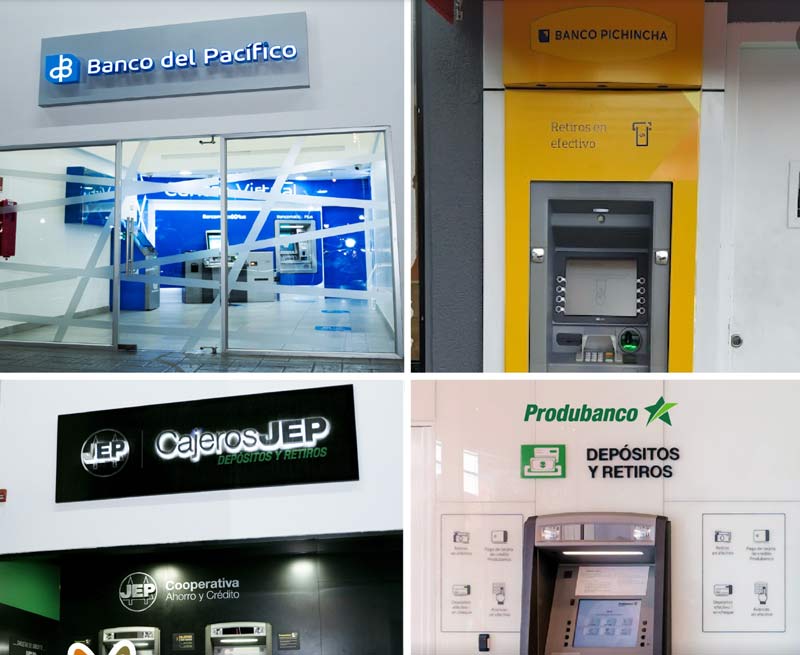The credit portfolios of banks grew by 8.2% in July 2024, with deposits increasing by 11%. In contrast, credit growth in cooperatives was only 0.7%, the lowest level since 2016.
Signs of a slight recovery in private bank lending emerged after nearly two consecutive semesters of deceleration. The slowdown began to reverse in June 2024 when the annual growth of bank portfolios reached 8.1%, increasing slightly to 8.2% in July. This brought the total portfolio to $43.892 billion.
Bank lending is gaining momentum, with annual portfolio growth remaining at 8% in April and May 2024, the lowest since July 2021. The consumer credit segment has been particularly dynamic, increasing its share of the total portfolio from 40.2% in July 2023 to 41.7% in July 2024.
Deposit Growth Boosts Bank Lending
The recovery in bank credit is attributed to a significant increase in deposits captured by private banks, according to economist David Castellanos, a professor at the Universidad Andina Simón Bolívar.
“With more deposits, banks have more funding and have been able to increase lending slightly over the last two months,” Castellanos said.
Bank deposits grew at a rate of 3.9% in March 2024 but surged to 11% by July 2024, the highest level since February 2022. One strategy employed by private banks was to raise interest rates on fixed-term deposits to attract more savers. As a result, rates for savings policies in banks reached their highest levels since 2007, according to the Central Bank of Ecuador (BCE).
Despite this slight improvement in the banking portfolio, credit growth has not yet returned to the levels seen in the first half of 2023, when the banks’ loan portfolio grew at a rate of between 10% and 14%.
Cooperatives Face Struggles
In contrast, the situation for cooperatives has not improved. The credit portfolio of cooperatives began 2023 with an annual growth of 15% but has since slowed steadily. In June 2024, the credit portfolio of cooperatives grew by just 0.7%, a rate not seen since December 2016, and lower than during the Covid-19 pandemic in 2020.
Deposits in cooperatives, part of the Popular and Solidarity Economy, have not grown as much as in private banking. In January 2023, the growth rate of deposits in cooperatives was 15.4% annually, but by June 2024, it had slowed to 3.2%.
The economic slowdown in the first half of 2024 has had the greatest impact on poorer customers, who are typically clients of cooperatives. Additionally, many of these clients have not recovered their payment capacity after the 2020 pandemic and remain over-indebted. This has contributed to a credit default rate in cooperatives of 8.13% as of June 2024, compared to 3.6% in banks as of July 2024.
Demand for Credit Expected to Grow
The credit slowdown was a key factor leading analysts and the BCE to conclude that the economy entered a recessionary cycle in the first half of 2024. However, BCE Manager Guillermo Avellán believes that credit will become more dynamic in the second half of 2024 as the economy enters a recovery phase.
The BCE’s latest Credit Supply and Demand Outlook study indicates that banks expect an increase in credit demand in the third quarter of 2024 (July to September). Castellanos notes that one factor influencing this demand could be the disbursement of at least $3 billion in loans from multilateral organizations to the Noboa government in the second half of the year. If this happens, more dollars would enter the economy, potentially increasing loan demand.
Seasonality also plays a role, according to Castellanos. There is typically more consumption between November and December due to Black Friday, Christmas, and New Year’s Eve.
Juan Javier Jarrín, director of research at the consulting firm Inteligencia Empresarial, agrees that bank lending could increase slightly in the second half of the year. However, he doubts that lending will return to the levels seen in 2022 and does not believe that credit will significantly boost the economy for the remainder of 2024.
Jarrín cites sustained interest rate increases by the United States Federal Reserve (FED) as one factor making it more expensive for Ecuadorian banks to access loans abroad. Although there are expectations that the FED may halt its aggressive rate hikes in September 2024, the cumulative increases since 2022 will not be easy to reverse, making financing costs challenging to reduce.
Ecuador’s high country-risk also contributes to higher credit costs for entities seeking loans abroad. Additionally, banks have faced liquidity constraints due to tax changes, limiting their capacity to lend.
The latest tax reform by the Daniel Noboa Government, in effect since March 2024, introduced a new tax on bank profits and required several banks to pay a monthly advance on Income Tax. The reform also increased the rate of the Tax on the Exit of Foreign Currency, affecting banks in several activities.
As Ecuador approaches presidential elections in February 2025, Castellanos warns that pre-election uncertainty could harm productive credit, as companies may delay investment plans until the next president and government policies are determined.


0 Comments